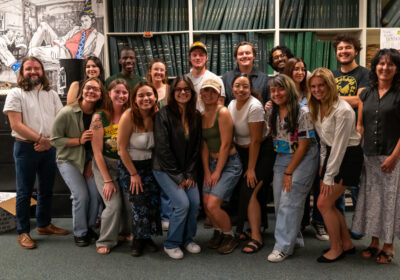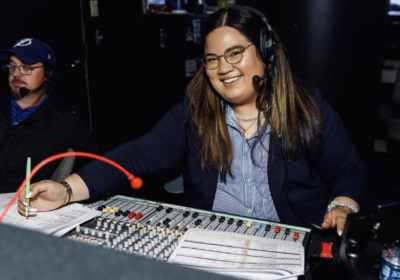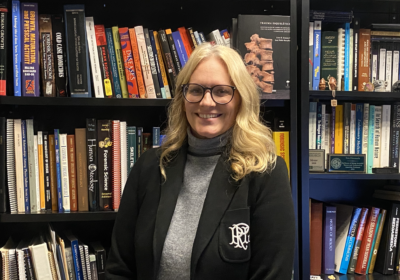New gallery looks at the black experience

We Can’t Breathe by William Villalongo
ORACLE PHOTO/MIKI SHINE
USF’s Contemporary Art Museum’s newest exhibit is exploring identity and representation.
Artists Mark Thomas Gibson and William Villalongo present their combined work from 1912 to 2016 in the exhibitions Woke! and Black Pulp!. Inspired by current issues of activism and police brutality, the artwork brings awareness to injustices, events and movements such as Ferguson and Black Lives Matter.
“I thought it would be very appropriate for our campus since we are a publisher of prints and interested in offering themes of diversity and thought the exhibition was so solid from a scholarly standpoint,” Margaret Miller, USFCAM’s Director of IRA, said. “This is something that our students and faculty and community would want to see.”
The exhibit features images from art platforms such as comic books, newspapers and magazines.
“I realize now that you don’t know what your actions are going to cause to somebody else, you can have the best intentions and it can go the other way,” Gibson said. “I’m really trying to communicate how to have a conversation.”
Gibson and Villalongo’s work exposes audiences to socio-political inequalities within our society. The art reveals how the current social justice events personally affected them.
“I know that there are young artists, African-Americans artists, people of color who are looking to see themselves in work. I’m interested in that,” Villalongo said. “I also know that there are people that don’t know the Black Lives Movement is happening or don’t understand why there’s a sign that says ‘We Can’t Breathe.’”
The piece ‘We Can’t Breathe’ is comprised of a series of shadow boxes, each housing a different colored diagram of the human respiratory system. Every box contains a letter and spells out the phrase.
“After Ferguson I just started thinking ‘I just can’t do it anymore.’ My mind is sort of refocused now, the world in a sense after Ferguson, changed everything for me and everything that I was thinking about,” Villalongo said. “I started thinking about the fact that we have to say something about Black Lives Matter. I couldn’t get that out of my head, and that language, I couldn’t get that out of my head. I can’t believe that we actually have to talk about this.”
In an effort to reframe the perspective of the black experience, Gibson and Villalongo present the concept of revolution and the idea of being “woke,” a term used for an individual’s awareness of social issues, to audiences.
“It’s about where you are, it’s about what you know, what’s happening, how you actually take the time to actually make the right action, actually move with the right action,” Gibson said. “So it’s not just about being aware about what’s happening, it’s about actually taking the right step and making an action still.”







